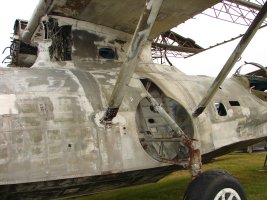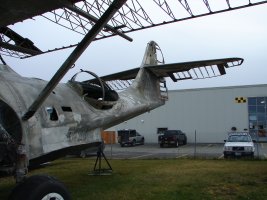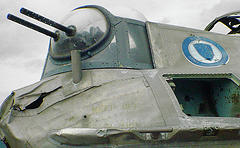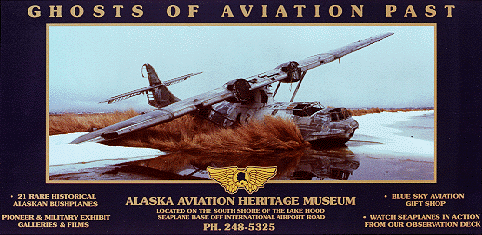| 1944 |
| Model Name |
|
Ser# |
| PBV-1 Canso |
RCAF Constructor Number: |
CV465 |
| PBY-5A Catalina |
US Navy Bureau Number: |
67918 |
| OA-10 |
U.S. Army Air Force Number: |
44-33954 |
|
| 1944 |
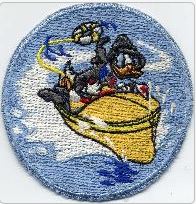 It was likely operated by the 10th Emergency
Rescue Boat Squadron which sure sounds like Navy, but was Army Air Force.
It was likely operated by the 10th Emergency
Rescue Boat Squadron which sure sounds like Navy, but was Army Air Force.
According to the Heritage of the Combat Search and Rescue Professionals pamphlet:
The Alaskan/Aleutian Campaign also involved Air/Sea Rescue in some of the most remote locations and harshest
weather ever experienced by USAAF aircrews. Initially, Navy Catalinas provided most of the rescue effort,
but as combat with Japanese forces extended down the Aleutian chain of islands and as America supported the
Russian war effort with Lend Lease planes being ferried across the Bering Strait, the USAAF built up rescue
forces to cover these efforts. The Arctic Training School was activated in the summer of 1943 at Buckley, Colorado.
This school produced the 1st Arctic Search and Rescue Squadron, which deployed to Greenland in 1944, the 3d Arctic Search
and Rescue Squadron deployed to the North Atlantic Division, and the Alaskan Wing Squadron deployed to Alaska.
In addition, the 10th Rescue Boat Squadron deployed to Elmendorf, Alaska. The units in Alaska used a
variety of equipment including C-64 Noorduyn Norseman and L-5 Sentential light planes, OA-10s,
C-47s equipped with rescue boats, and dogsleds.
|
| 1946, March 8 |
10th Emergency Rescue Boat Squadron on 3 July 1944, and was inactivated.
10th Air Rescue Squadron (ARS),
an active duty squadron organized at Elmendorf Field in 1946 and mostly manned by Alaskans. |
| 1947, September 30 |
Five months after arriving at Elmendorf Air Force Base, this Catalina made an emergency landing on Dago Lake south of
King Salmon, AK on September 30, 1947 because the starboard engine threw a rod. There was some minor hull damage and everyone onboard survived
this adventure unscathed. Many unsuccessful attempts were made to recover the plane. Several Noorduyn Norseman aircraft
were damaged when they were used as crew ferries. A replacement engine was lost to the lake...
The military wrote it off as a loss, after having had guards initially on the site, and rendered it
immobile by disabling hydraulic lines and control cables.
|
|
Declared government surplus, R.S. Richards of Anchorage, AK bought the salvage rights for $58 and held them from October 1948-1978.
They did not know the plane had been "sabotaged". Discouraged from restoring it,
they traded parts of it with Alaska Coastal Ellis Airlines for a Piper floatplane. |
| 1948 |
USAAF Serial Number 44-33954 Model OA-10. Assigned to the USAAF 10th Rescue Squadron.
PBY-5A/6A amphibians for use in by the USAAF for search and rescue duties. This series was redesignated A-10 in 1948.
(pacificwrecks.com, (Wikipedia) - Consolidated_PBY_Catalina) |
| 1978 |
Alaska Historical Aircraft Society, Anchorage, AK |
| 1984, May |
Registered with the FAA as N44BY - Model: PBY-5A, 44-33954 |
| 1984, September 30 |
Lifted from Dago Lake by Alaska Army National Guard CH-54 "Penelope", transported to King Salmon.
Recovery by 207th Aviation CH-54B Skycrane and Kulis ANGB Sgt Paul Sandhofer using giant airbags to lift aircraft at Dago Lake, Alaska. |
| 1985, May |
U.S. Historical Aircraft Preservation Museum, Anchorage, AK |
| 1987 |
A recovery project conducted by the National Guard with volunteers from the Alaska Aviation Heritage Museum salvaged
the wreck in 1987, transported from King Salmon to Anchorage and Alaska Aviation Heritage Museum.
This operation was captured in a DVD called "The Queen of Dago Lake".
|
| - |
FAA N57875 - Model: OA-10, 44-33954 |
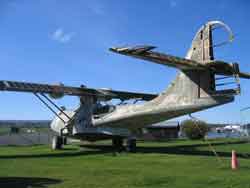
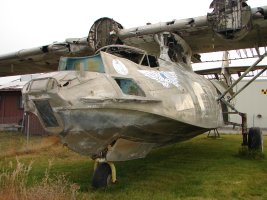
 It was likely operated by the
It was likely operated by the 